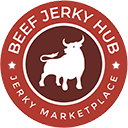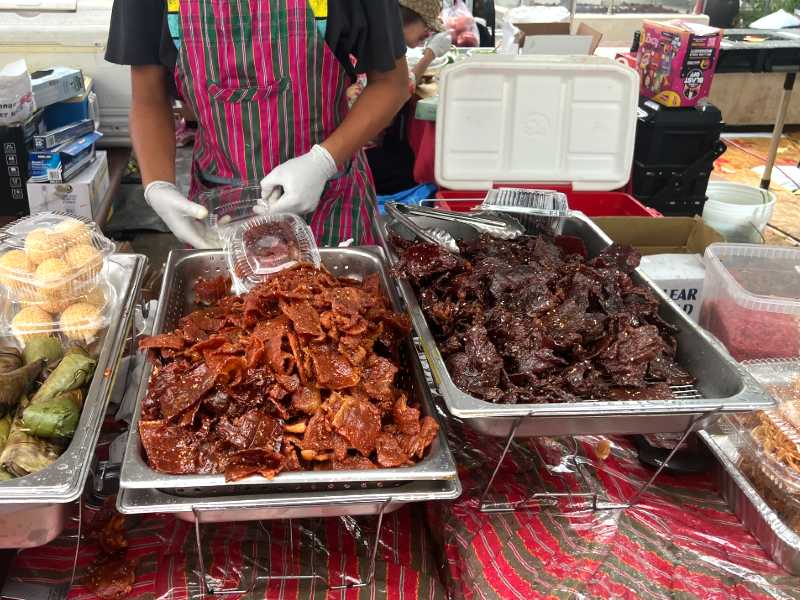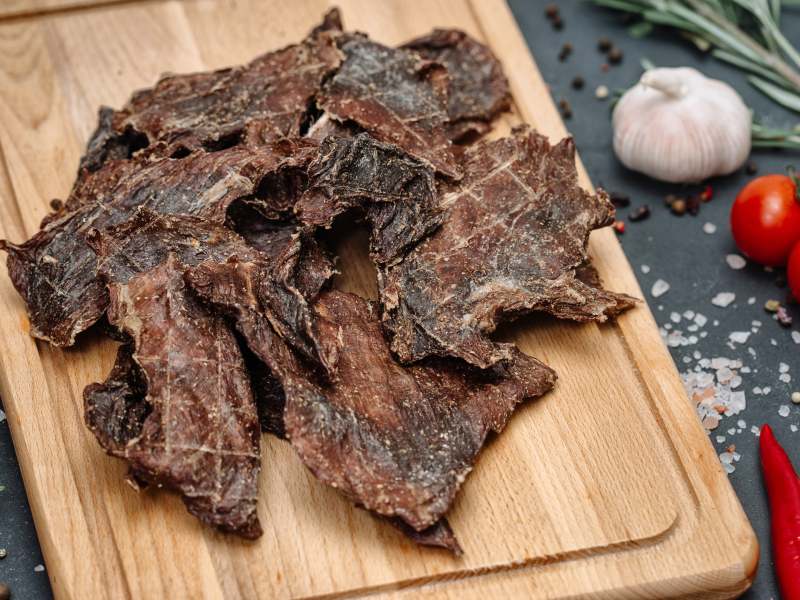Abbreviated History
The origin of jerky can be traced back to the Native American tribes of North and South America. In fact, the term “jerky” derives from an American-Indian word that literally translates to “dried meat.”
Because they were largely nomadic people who sometimes went long periods without fresh food, the American Indians dried meat for preservation. They didn’t have refrigeration in those days, so the best way (to preserve food) was to dry it out with salt and spices and take it with them on their travels.
Once Europeans set foot in the New World, they encountered jerked meat, a creation of the Native Americans. Eager to embrace this distinctive and practical food, the settlers integrated it into their diets, especially during their extensive journeys into the uncharted frontier.
Jerky eventually reached Europe, where the Europeans continued adjusting the recipes, adding spices and flavorings to improve its taste.
Today, jerky is as varied as the palates of those who consume dried meat. If you’re curious, browse our jerky types section to learn more.
History of Beef Jerky (Video)
Longer History (but Still a Quick Read)
The origins of beef jerky might surprise some folks.
Bison Jerky began as a staple of the Native American diet. In fact, the word “jerky” is a loanword from the Quechuan language spoken by a tribe of the Incan people in ancient South America. Their term “ch’arki” translates into either “dried meat” or “burning meat.”
(Author’s note: Bison and Buffalo are often used interchangeably, although technically, they’re different. How so? Bison are Buffalo, specifically from North America.)
The word “chaqui” was quickly adapted into the vernacular of the Spanish Conquistadors. With several dialectical changes in Quechuan, Spanish, and English, the word “jerky” was born.
Although we know that jerky comes from the Native Americans, there is some debate about how early it became a part of their diet. Some historians believe buffalo jerky was consumed for thousands of years by various tribes, while others claim it was much more recent, starting with the Quechua people in the 1500s.
Connect with Real Jerky Makers
Because the Best Jerky Doesn't Come from a Store
The first recorded usage of the word “jerky” came in John Smith’s Map of Virginia, made in 1612. Smith wrote: “as drie as their jerkin beefe in the West Indies.”
Regardless of its actual date of origin, jerky was popular among the Native Americans because it served as a portable source of nutrition. Any meat can be made into jerky, which allows the meat to be stored and carried for extended periods. This is a major benefit to hunters on long journeys and nomadic people.
The Quechua people made their jerky from llamas and alpacas. The Native tribes of North America used their local animals: deer, elk, and of course, bison.
How Native Americans Made Jerky
Irrespective of tribe origin or the meat source, the process of making jerky was the same. The meat was removed from its bones and fat, cut into thin slices, and covered in salt before being smoked over a fire or dried in the sun.
A popular related dish among the tribes of the Cree American Indians was called “pemmican.” It involved a type of jerky from deer, elk, or buffalo mixed with the animal’s fat and protein. It also included various ingredients for seasoning, normally dried fruit, such as berries, that had been crushed.
After the jerky or pemmican was made, the American Indians carried them in rawhide pouches for later consumption.
Europeans in the New World were immediately impressed by this food source and started learning the intricacies of the process from the Natives. The tribes taught the settlers how to prepare the meat by cutting it into long strips. They also shared various recipes with their new European country-mates from various spices and seasonings.

Settlers Adopted Jerky from Native Americans
It didn’t take long for jerky to be adopted into the settler diet, with the new Americans soon preparing and cooking jerky from the knowledge they obtained from the Native wisdom. It quickly became a popular snack and portable meal among those who migrated to the New World.
The popularity of jerky reached a climax during the mid-1800s when the Americans were expanding the country into the Western frontier. Much like the Native American people who lent their knowledge to the American settlers, the explorers valued jerky as an invaluable food source on long journeys.
The Americans understood that they couldn’t rely on their ability to find fresh food sources along their journey.
So, on their travels, they brought jerky from various types of meat, including turkey and goose. Jerky was so well sought after that exploration parties ensured that they had skilled jerky makers in their group.
Jerky remained a popular snack throughout the early days of America. Then, the product was quickly snatched up by American industries during the Industrial Revolution.
Industrial Revolution
Packaged food products of all types were becoming fashionable as new industrial techniques made storage easier. Jerky was no exception. Companies soon began producing large amounts of jerky to sell to the American people.
Although the number of specialized jerky makers has since dwindled as the process became simplified and shifted to factory production, the number of jerky eaters and enthusiasts boomed like never before.
Today, millions of people across the globe consume jerky of all types regularly.
Beef is the meat of choice in most American and European kitchens. As such, beef jerky is much more appealing than jerky made from llama or buffalo meat.
That said, today’s jerky products have a great variety of flavors due to the added seasonings and continual improvements on the tried and true recipe.

“Drying Meat” — a Dated Practice
Although our jerky traces its lineage back to the Quechuan ch’arki, the process of drying meat for storage is an ancient technique traced to many major past civilizations.
The most prolific account of dried meat comes from the Ancient Egyptians. Archeologists discovered remnants of preserved food while excavating Egyptian tombs, proving that the process was an important part of their culture and dietary habits. Much of the recovered food was relatively undamaged, displaying their prowess for mummifying more than people.
Jerky’s history also has ties to the American military, with beef jerky added to the updated Reserve Ration in the post-World War 1 days. Today, the military is working on infusing caffeine into beef jerky rations, adding energy to the already protein-heavy food.
This high protein content is partly why beef jerky remains a popular snack today. We no longer have the concerns of past people about the availability of meat products with supermarkets everywhere and freezers in our kitchens. However, beyond the great and unique taste, jerky enthusiasts prefer the snack in the hopes of a quick and easy protein intake.
Who could have imagined just how important the role of beef jerky was to the early settlers and Native Americans?
Conclusion
Jerky, particularly beef jerky, is a delicious, high-protein food source with a rich history that originated from contact with the Native Americans of North and South America.
"You might be a redneck if you think that beef jerky and moon pies are two of the major food groups."
-- Jeff Foxworthy





